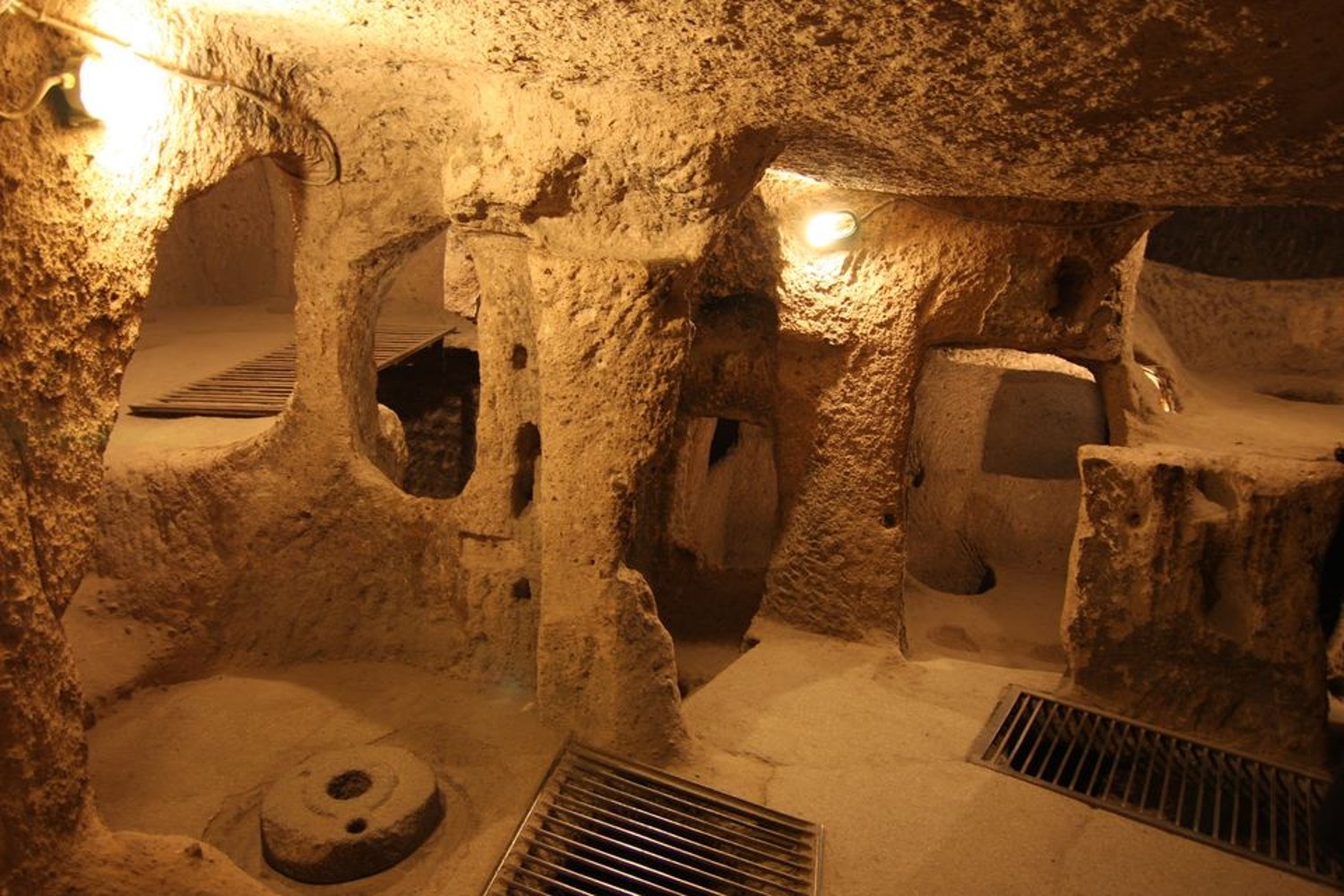CappadociaCappadocia ActivitiesUnderground Cities Cappadociawhat to do in cappadociawhere to go in cappadocia
Construction of the Undrerground Cities - Cappadocia

Construction of the underground cities always remains to be a probable question in our minds that the cities which are initiated by people who led construction of underground cities in Cappadocia in Paleolithic Era, Neolithic Era and Prehistoric Era and later horizontally and vertically turned into todays locations according to their needs by tribes such as Hittite, Rome and Byzantine.
There are about 150 underground settlement areas within the terrítory of Cappadocia. Only 36 of these can be qualified as underground cities. Others are various small underground housings which can hold 2-3 or 5 families. When it is necessary to divide underground settlement areas, which are located in Kayseri, Nigde, Aksaray, Kirşehir and especially spread to the borders of Nevşehir within the territory of Cappadocia, into two, it is more appropriate to call small settlement areas as underground housings and other populous places as underground cities. It is known that tribes such as Hittite, Roman and Byzantine lived at the places, where we call them underground cities. It has not been determined yet how those people living in underground cities turned these cities into today's locations and how many centuries did it take to work underground. However, the longest working and living period was the century when underground cities in Cappadocia were dug by Christians who could not bear Arabic and Sassanid threat after Cappadocia was conquered by the Byzantine Empire. It is clearly visible in some underground cities in Cappadocia that the rooms located near entrances are profoundly different from those that are inside.

Sarali and Ozluce underground cities can be given as an example regarding these differences. Rooms located near the entrance are Similar to those rooms in hand carved caves. It has been seen that the rooms have been roughly excavated, no chisel or pickáxe mark has been found. Excavations in inner rooms have DEen conducted in a stricter manner, sharp marks have been found. It is a known fact that these cities did not have a front door but entrance similar to those in hand carved caves, later covered by debris and Taskapi/The stone doors / placed with defensive purposes. Stone doors used in underground cities were placed afterwards and manufactured outside the caves where they can be found today. With Ozkonak underground cities being an exception, the place where the doors were manufactured are still unknown to us. In a second part of the room a stone door was left unfinished. Tempers of tuf stones used in underground city doors are different from each other. The stones of underground cities are softer than those used in doors. Because of this, the locations of materials used in these doors are known. Kayseri İncesu, Belören Taşlık, Derinkuyu Çakıllı, Kaymaklı Kavak Village are some of these locations. Only in these locations temper of materials used in stone doors are similar. It is a probability that these stones were designed in above-mentioned locations and carried by chariots and placed in underground cities.








0 comments